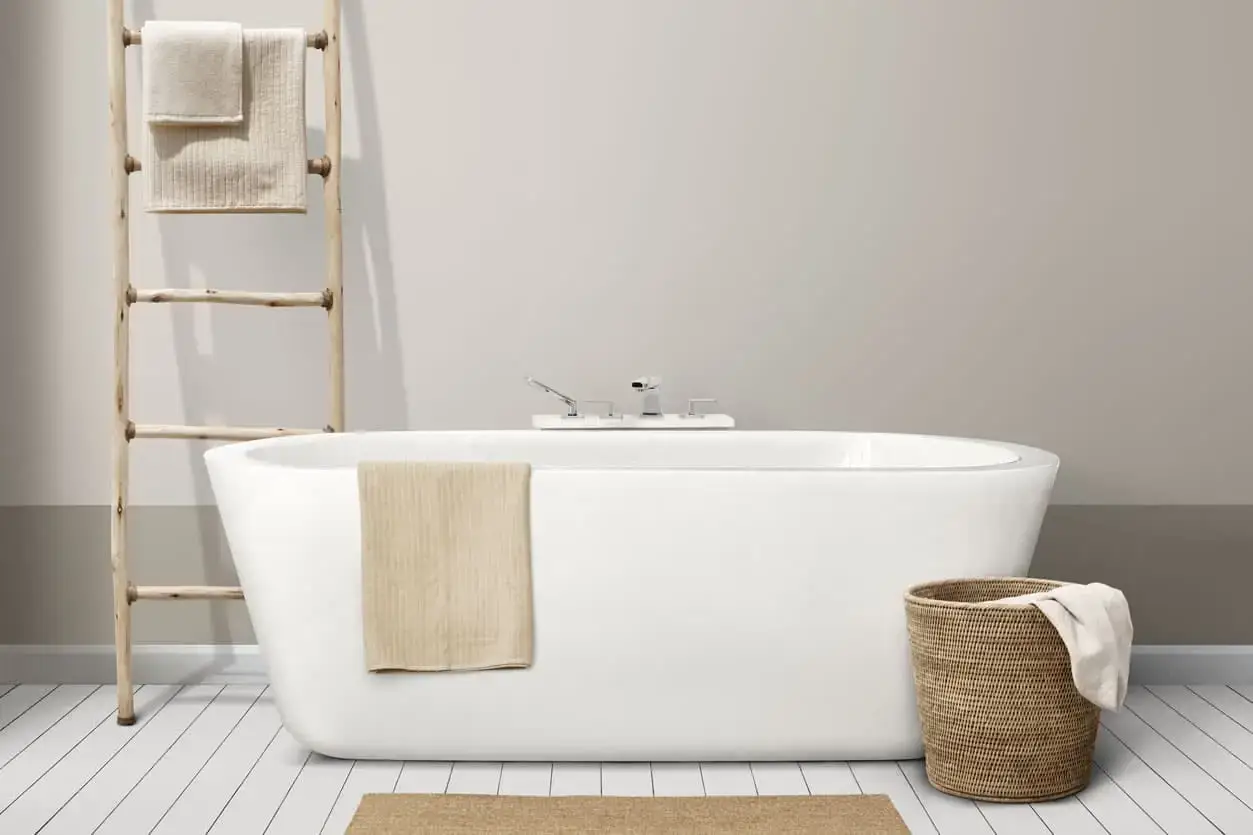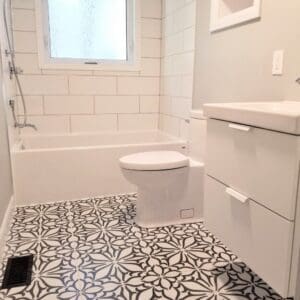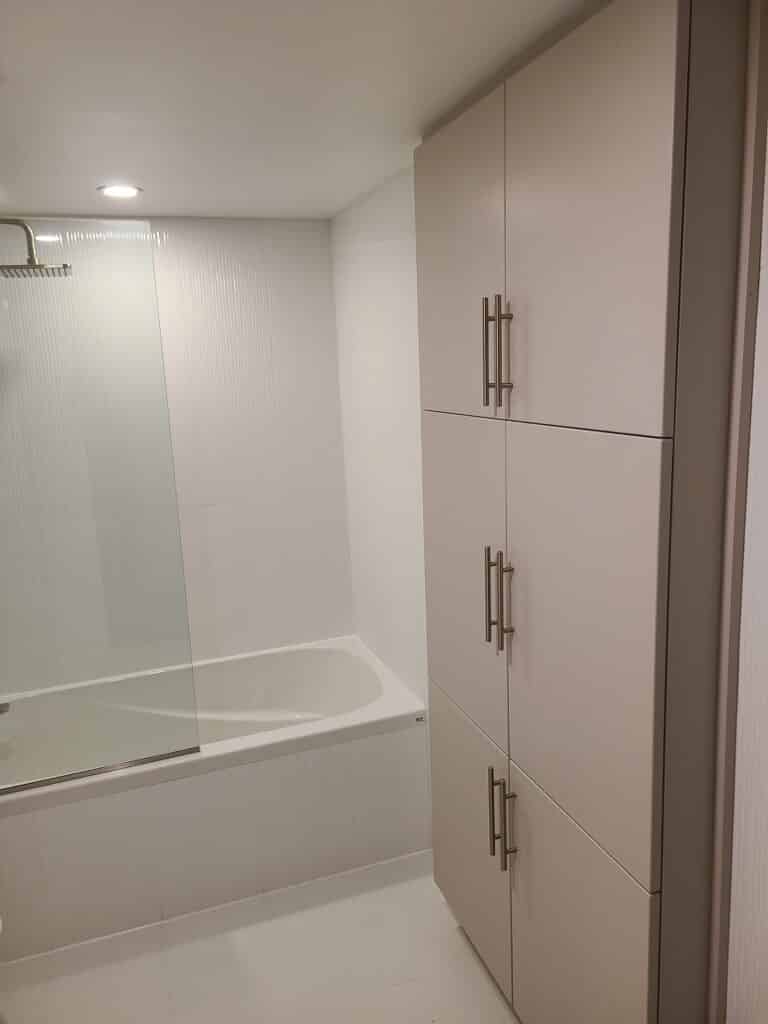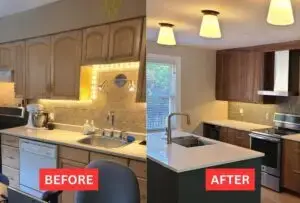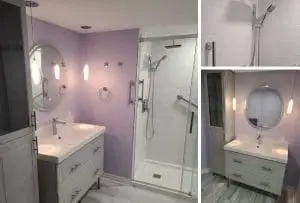Are you in the market for a new tub? If so, you may be wondering how to choose the perfect bathtub.
There are many different types and styles of tubs available, so it can be difficult to decide which one is right for you.
In this blog post, we will discuss the different factors you should consider when choosing a bathtub.
We will also provide tips on how to find the best deal on a bathtub. So if you’re ready to renovate your bathroom, keep reading!
Bathroom Size
When choosing a bathtub, the first thing you need to consider is the size of your bathroom.
You will want to make sure that the bathtub you choose will fit in the space you have available. You should also take into account the shape of your bathroom when selecting a bathtub.
If you have a small bathroom, you may want to choose a corner bathtub. Corner bathtubs are great for small spaces because they allow you to maximize your space.
If you have a large bathroom, you may want to select a freestanding bathtub. Freestanding bathtubs are not attached to any walls, so they can be placed anywhere in your bathroom.
Bathtub Types
The next thing you need to consider is what type of bathtub you want.
There are three main types of bathtubs: alcove, freestanding, and drop-in.
Alcove bathtubs are the most popular type of bathtub. They are designed to fit in an alcove of your bathroom.
Freestanding bathtubs are not attached to any walls, so they can be placed anywhere in your bathroom.
Drop-in bathtubs are placed directly into a tiled tub deck (framed box with opening on top for tub to drop into, usually covered in tiles).
Bathtub Materials
Once you have decided on the type of bathtub you want, you need to select a material. The most common materials used for bathtubs are acrylic, fiberglass, and enameled steel.
Acrylic is a synthetic material that is durable and easy to clean and can be molded easily allowing for more of sloped back and armrest.
Fiberglass has a top coat that tends to wear off. Once gone the product can be very difficult to clean.
Enamel is a coating that is applied to the surface of the bathtub. Enamel steel tubs are durable but don’t retain the heat in the water very well and they tend to be uncomfortable to bath in.
Installations
Once you’ve selected your tub’s style and materials, it’s time to decide how to install it.
There are quite a few different installation methods for bathtubs, meaning you must pick the best type for your bathroom and preferences.
Not only that, but you should consider how much of a hassle you’re willing to put up with when installing your new tub.
Why is that?
It’s because specific methods are easier than others. In general, alcove and drop-in tubs are the easiest to install, with freestanding and corner tubs being more complex.
For this reason, you should also consider your budget if you plan on tackling a more challenging installation method. That’s because it’s best to leave it to the professionals for trickier jobs involving heavy lifting and complicated plumbing connections.
If you attempt to install a bathtub on your own, you may end up causing unintentional damage to the following:
- Your bathroom tile and walls
- Your new tub
- The plumbing in your home
Hiring licensed and insured contractors to install your tub will avoid these potential issues. Not only that, but if an insured contractor does cause damage to your home, they’ll be liable for everything and will have to fix it at no cost to you.
Alcove installation
Among the easiest installation methods is to use three walls to tuck the tub into, with one finished side.
You can use this method if you have an existing ingress or nook in your bathroom. Once you place the tub in the alcove, all you need to do is connect the plumbing, and you’re all set.
It doesn’t take a large team of people to perform an alcove installation, either. In fact, a team of 2 people can knock it out with relative ease.
Drop-in Installation
This is another easy installation method, and it’s pretty similar to using an alcove. As the name implies, you drop the tub into a carved-out space or ingress in your bathroom to install the tub.
The only catch is that you have to connect the required plumbing before you drop the tub in, so it’s crucial not to mix up the steps.
A noticeable drawback of this method is that it requires an existing ingress or carved-out space to work.
If you don’t have any suitable areas to drop a tub, you’ll have to use one of the other, more complicated methods.
Freestanding Installation
While it’s arguably the most stylish-looking of all the methods, installing a freestanding tub is also one of the most difficult.
At the same time, freestanding tubs are the most versatile, as you can install them in any room in your home, not just a bathroom. As long as you have a water source and a drain, you can install a freestanding tub.
It’s essential to note that these are the heaviest out of all the bathtub types. As such, you’ll need to ensure that your floor can withstand the additional weight.
Corner Installation
Installing a corner tub is undoubtedly the most complex and challenging.
Why is that?
It has to do with a few factors. First, corner tubs have more components than other tubs, which can make them difficult to install. Moreover, they’re wider than other types of tubs and require more room (and human resources) to put in place.
Lastly, corner tubs have the most intricate plumbing connections involved, which is why you should seek the help of professionals to ensure things get done correctly.
Now that you know how to choose a bathtub, it’s time to start shopping! You can find bathtubs online or at your local home improvement store. When shopping for a bathtub, be sure to compare prices and features. Be sure to read customer reviews to get an idea of what other customers think about the bathtubs you are considering. With a little research, you should be able to find the perfect bathtub for your bathroom renovation!
Feel free to contact us or call us at 613-727-9427 for a free in-home consultation on your next renovation in Ottawa

